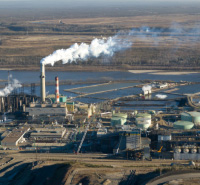Back in the 1990s I was working with a group that was trying to “buy back” the utility that services New Orleans because it was so badly run. Now look at them.
http://www.nola.com/business/index.ssf/2012/03/entergy_new_orleans_to_highlig.html
Entergy New Orleans to highlight energy-efficiency techniques at Home and Garden Show
Published: Friday, March 02, 2012, 9:51 AM Updated: Friday, March 02, 2012, 9:54 AM
![]() By Richard Thompson, The Times-Picayune
By Richard Thompson, The Times-Picayune
Entergy New Orleans representatives will be on hand to demonstrate new interactive online tools for maximizing savings from improving a home’s energy-efficiency and to provide info about Energy Smart incentives and rebates this weekend at the 57th annual New Orleans Home and Garden Show.
The show, billed as the largest consumer home show in the region, highlights recent advances in energy-efficient technologies and products for home remodeling, green building, decorating and landscaping. It starts today and runs through Sunday at the Mercedes-Benz Superdome.
At the Entergy New Orleans booth (# 600-601), utility officials will discuss tips and incentives aimed at giving customers the opportunity to save money on power bills.
There will also be a game show in which contestants can answer questions about energy efficiency to win gift cards for new Energy Star appliances, courtesy of Entergy New Orleans. For the second straight year, the game show is slated to be hosted by HGTV’s Jim Parks.
In addition, Entergy lineman will demonstrate on Saturday and Sunday the danger of getting too close to live electrical lines, and explain and demonstrate safety equipment used when working on power lines.
:}
Go there and read. More tomorrow.
:}

 GREEN ECONOMY
GREEN ECONOMY




